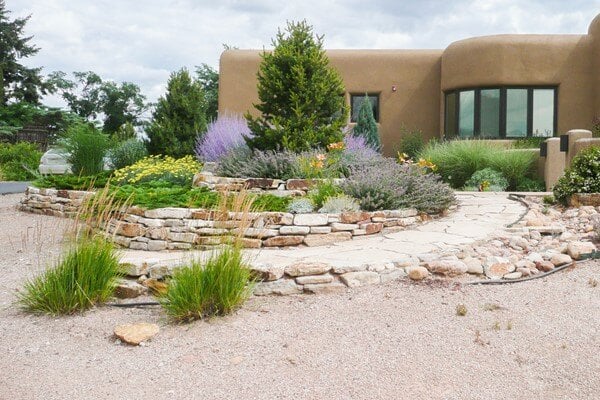Pinyon Pine
Pinyon pine is one of the most drought-tolerant evergreen trees. Native to the southwest US, it has spreading branches that gently sweep upward. This habit creates a small, bushy tree that is great for screening.
These relatively slow-growing trees are usually compact and oval in shape when young. As they mature, the crown becomes more open.
They have stiff, dark green needles bundled in twos. The spherical, reddish-brown cones are very attractive and contain edible nuts.
Pinyon pine is one of the best choices for hot, dry, sunny locations in Colorado Springs.
.jpg)
.jpg)
.jpg)
.jpg)
.jpg)
.jpg)
.jpg)
Pinyon Pine
Pinyon pine is one of the most drought-tolerant evergreen trees. Native to the southwest US, it has spreading branches that gently sweep upward. This habit creates a small, bushy tree that is great for screening.
These relatively slow-growing trees are usually compact and oval in shape when young. As they mature, the crown becomes more open.
They have stiff, dark green needles bundled in twos. The spherical, reddish-brown cones are very attractive and contain edible nuts.
Pinyon pine is one of the best choices for hot, dry, sunny locations in Colorado Springs.
Plant details
Botanic Name
Pinus edulis
Pronunciation
PY-nus ED-yew-liss
Mature Height
10 to 25 ft.
Mature Spread
10 to 30 ft.
Water usage
One Droplet: Water twice per month or less, once established.
Two Droplets: Water about once per week, once established.
Three Droplets: Water about twice per week, once established.
Flower Color
NA
Bloom time
NA
Colorado Native
Yes
Natural Habitat
southwestern United States
Light Requirements
sun
Cold Hardiness
USDA zones 4-8
Elevation Limit
hardy to 7,500 ft.
Performance
Pinyon pine is one of the best small, evergreen trees for hot, dry sites in the Pikes Peak area. They do not grow well when planted in a regularly irrigated landscape, like lawn areas.
They may take awhile to become established, but become beautiful, long-lasting trees. Pinyon pine is one of the best evergreen choices for the Colorado Springs area.
Maintenance
None usually required under normal conditions. Selective pruning may be needed to shape the tree over time.
See in a landscape
The stonework and hardscape in this yard help add structure and planting space while allowing the landscape to blend into the surrounding native areas. The planting beds closer to the house and near the patios are slightly higher water using and have a pop of color that accents the entrance. The plants outside of the courtyard require less water and maintenance and help blend in with the Colorado landscape that surrounds this yard. This is a great example of a no-grass yard that instead features courtyard gardens, patios and a pathway around the house.

.jpeg)
.jpeg)
.jpeg)
.jpeg)
.jpeg)
.jpeg)
.jpeg)
.jpeg)
.jpeg)
.jpeg)